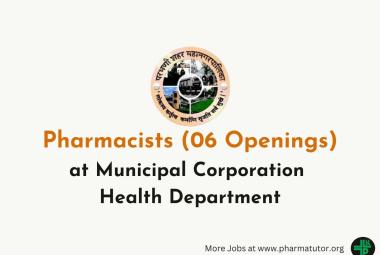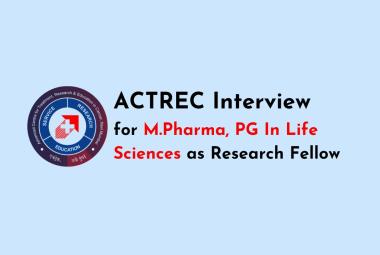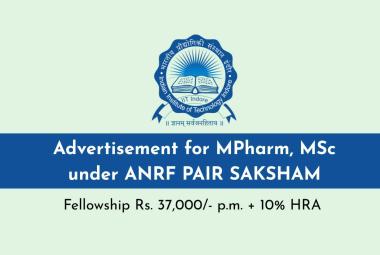{ DOWNLOAD AS PDF }
 ABOUT AUTHORS
ABOUT AUTHORS
Nandu Kayande*, Rakesh Patel
Department of Pharmacy,
OPJS University, Churu, Rajasthan, India
* nandu_kayande@rediffmail.com
ABSTRACT
The traditional Indian medicine - Ayurveda, describes various herbs with anticancer as well as antioxidant properties. Various plant products have been used in treatment of cancer over the years. India is a peninsula of herbal hub, in which ayurvedics system of medicine has flourished as an enlightment in the field of Medicine. Currently medicinal plants have become the paramount source of drug discovery in research for treating diverse form of diseases including Cancer. In this review ayurvedas classical literature and evidence based research data were emphasized to explore the ayurvedic medicinal plants with potent anticancer activity.
[adsense:336x280:8701650588]
REFERENCE ID: PHARMATUTOR-ART-2420
|
PharmaTutor (Print-ISSN: 2394 - 6679; e-ISSN: 2347 - 7881) Volume 4, Issue 7 Received On: 26/02/2016; Accepted On: 02/03/2016; Published On: 01/07/2016 How to cite this article: Kayande N, Patel R; Review on: Indian Medicinal plants having anticancer property; PharmaTutor; 2016; 4(7); 25-28 |
INTRODUCTION
From the earliest times, herbs have been prized for their pain-relieving and healing abilities and today we still rely largely on the curative properties of plants. According to World Health Organization, 80 % of the people living in rural areas depend on medicinal herbs as primary healthcare system. The synthetic anticancer remedies are beyond the reach of common man because of cost factor. Herbal medicines have a vital role in the prevention and treatment of cancer and medicinal herbs are commonly available and comparatively economical. Scientists all over the world are concentrating on the herbal medicines to boost immune cells of the body against cancer. By understanding the complex synergistic interaction of various constituents of anticancer herbs, the herbal formulations can be designed to attack the cancerous cells without harming normal cells of the body.[1,2]
In this study we have selected few medicinal plants which show high potency towards the cancer cell line by inhibiting their progression.[1,2] These selected medicinal plants show the anticancer, antioxidant property.[3] This can be further used for the treatment of tumor, oxidative stress. Phytoconstituents derived from the herbs of CedrusDeodara, Piper Longum, Picrorhiza kurroa, Berberis Aristata, Vitex Negundo linn, etc. have been used in this study.
HERBS WITH ANTICANCER ACTIVITY
[adsense:468x15:2204050025]
Picrorhiza kurroa[4,5]
Family: Plantaginaceae
Genus: Picrorhiza
Chemical Constituents:[5] Chemical composition of Picrorhiza kurroa includes Kutkin, a bitter glycoside which contains two C-9 iridoid glycosides-Picroside I and Kutakoside.
Uses: The rhizome has a long history of use in Indian Ayurvedic medicine for the treatment of digestive problems. Other uses have been proposed (e.g. for asthma, liver damage, wound healing, vitiligo) but the medical evidence is not yet conclusive. It appears to be relatively safe based on its long history of traditional use.[6]
Anticancer evaluation [5,6]
Nano encapsulated extract formulation from rhizome of Picrorhiza kurroa enriched with Apocynin, caffeic esters and cucurbitacins aglycone compounds, to produce any cytotoxic effect on mammalian cell lines. The test conducted using MTT method using human hepatocarcinoma cells (HepG2) and Madin Darby Canine Kidney (MDCK) cell lines as part of the in vitro preclinical characterization of compound. More than 100% increment in cell killing at a concentration of 100µg/ml recorded in both the cell lines, 52.5% cytotoxicity in HePG-2 cell line was recorded at 0.1µg/ml concentration, whereas 50.4% cytotoxicity assessed in MDCK cell line at 1µg/ml of Formulation concentration. Exhibited LC50 value of Formulation in HePG-2 and MDCK cell lines were recorded 1.2 µg/ml and 4.14µg/ml respectively. Cytotoxic effect against HePG-2 cancer cell line is considered as a predictive anticancer activity indicator also, where Doxorubicin is a standard anti-cancer agent which is a highly cytotoxic drug. MDCK cytotoxicity results support that formulation is less cytotoxic in normal cell lines, as MDCK is a Non-Cancerous cell line. (M. Hemanth kumar, C. Ramesh et. Al., 2014).
Cedrus deodara
Family: Pinaceae
Genus: Cedrus
Chemical constituents[7,8]:The bark of Cedrus deodara contains large amounts of taxifolin.The wood contains cedeodarin (6-methyltaxifolin), dihydromyricetin (ampelopsin), cedrin (6-methyldihydromyricetin), cedrinoside and deodarin (3′,4′,5,6-tetrahydroxy-8-methyl dihydroflavonol). The main components of the needle essential oil include α-terpineol(30.2%), linalool(24.47%), limonene(17.01%), anethole(14.57%), caryophyllene(3.14%) and eugenol(2.14%). The deodar cedar also contains lignans and the phenolic sesquiterpene himasecolonetogether with isopimaric acid. Other compounds have been identified as (−)-matairesinol, (−)-nortrachelogeninand a dibenzylbutyrolactollignan (4,4',9-trihydroxy-3,3'-dimethoxy-9,9'-epoxylignan.
Uses[1]: The inner wood is aromatic and used to make incense. Inner wood is distilled into essential oil. As insects avoid this tree, the essential oil is used as insect repellent on the feet of horses, cattle and camels. It also has anti-fungal properties and has some potential for control of fungal deterioration of spices during storage. The outer bark and stem are astringent.
Anticancer evaluation [8,9,10]
The anti-proliferative activity of hydro-alcoholic extract of Cedrus deodara were screened against a panel of 14human cancer cell line representing different tissues (Lung, Pnacrease, colon, cervix, oral, bladder, prostate, breast, leukemia etc.) Dc found maximum anticancer activity against three cell lines. (SN Gaidhani, Sanjay Singh et.al., 2013)
Piper longum
Family: Peparaceae
Genus: Piper
Chemical constituents:[11] Long pepper is known to contain the chemical compound piper longumine
Uses:[1,3] The plant has been used in traditional medicine as well as in the Ayurvedic system against various disorders and infections. Unripe, dried fruits are used as an alternative to tonic. Various plant preparations like decoction of young fruits and roots are used for treating chronic bronchitis, cough, and cold also used as antidote in snake biting and scorpion sting (15, 16, and 17). A use of combination of fruits of Piper longum, seeds of Emblica ribes and borax powder has already been cited in Ayurveda as contraceptive.
Anticancer evaluation [11,12]
The antioxidant properties of the plant extracts was determined using FRAP method. The anticancer activity of the different extracts of fruits of Piper longum on human lung epithelial adenocarcinoma cell line (HCC-827) has been assessed in vitro using 3-(4,5-dimethylthiazol-2yl)-2,5-diphenyl tetrazolium bromide (MTT assay). The potency of plant extracts to inhibit the cancerous growth was recordedin terms of decrease in viable cell count as compared to the control value. The inhibition of the growth of human lung epithelial adenocarcinoma cell line (HCC-827) has been found to be dose dependent.(S. Sawhney, R. M. Painuli et.al. 2011)
Vitex negundo
Family: Lamiaceae
Genus: Vitex
Chemical constituents [13,14]: The principal constituents of the leaf juice are casticin, isoorientin, chrysophenol D, luteolin, p–hydroxybenzoic acidand D-fructose. The main constituents of the oil are sabinene, linalool, terpinen-4-ol, β-caryophyllene, α-guaieneand globulolconstituting 61.8% of the oil. In vitroand animal studies have shown that chemicals isolated from the plant have potential anti-inflammatory, antibacterial, antifungaland analgesic activities.
Anticancer evaluation [15,16]
The antitumour activity of the ethanolic extract of leaves of Vitex negundo (EVN) has been evaluated against Dalton’s ascitic lymphoma (DAL) in Swiss albino mice at the dose of 250 & 500 mg/kg, body weight. The experimental parameters used were tumour volume, tumour cell count, viable tumour cell count, mean survival time and increase in life span to assess antitumour activity. The extract administered orally for 14 consecutive days to tumor bearing group of animals. The extract increase the life span of DAL treated mice and restore the hematological parameters as compared with the DAL bearing mice in dose dependant manner. The study revealed that the EVN showed significant antitumour activity in tested animals. (Nandu Kaynde, Dr. R Patel et.al.2015)
Berberies Aristata
Family: Berberidaceae
Genus: Berberis
Chemical constituents[1,4]: The root bark contains berberine, quaternary ammoniumsalt of isoquinoline alkaloid.
Uses[17]: The fruits of the species are eaten by people living in areas where the plant is found, often as a dessert. They are juicy and contain plenty of sugars and other useful nutrients that supplement their diet. Its stem, roots, and fruits are used in Ayurveda. The roots can also be used for making an alcoholic drink. Aqueous roots extract of this plant was found to have antimalarial activity in animal models.The plant as a whole is a good source of dye and tannin which is used for dyeing clothes and for tanning leather. Roots extract of B. aristata was found to have good dyeing properties on cotton.
Anticancer evaluation[18,19]
The methanolic extract of stems of B. aristata , was used to investigate its anticancer activity in human breast cancer cell line (MCF-7). Different concentrations of the methanolic extracts (125, 250 and 500 μ g/ml) were subjected to determine the cytotoxic effect by measuring the cell proliferation activity in MCF-7 breast cancer cell lines up to 48 h of incubation. The IC50 value for methanolic extracts identified was 220μg. Further, significant decreased (80%: p≤0.001) colony formation at 500 μg/ml of methanolic extracts was noticed by soft agar assay in MCF-7 cells. However, in vitro scratch assay revealed the significant (p≤0.001) inhibition of cell migration up to 50% at 250μg of extracts. In addition, significant (68%) increase of apoptosis at 500μg of extracts in MCF-7 cells was evidenced by live/dead assay (Mamatha Serasanambati, Shanmuga Reddy Chilakapat et.al., 2015).
DISCUSSION
Science has long acknowledged the value of healing substances found in nature, such as digitalis, aspirin, penicillin, insulin, steroids, etc. There has been aresurgence of interest, both scientifically and popularly, in the utilization of natural approaches. Experiments on cell lines and in animals demonstrated that herbal drugs anticancer role by inducing apoptosis and differentiation, enhancing the immune system, inhibiting angiogenesis and reversing multidrug resistance [10,16]. However, the mechanism of the anticancer role has not yet been fully elucidated. Further research is needed to explore the molecular mechanism of herbal drugs. Although the clinical trials showed that herbs were helpful against cancer, these outcomes require further confirmation with rigorously controlled trials, many clinical trials focusing on the anticancer effects of herbal formulas have been conducted. Though many of them demonstrated that herbs are helpful against cancer, especially useful in improving survival and quality of life in patients suffering from advanced cancer, the lack of controls and reporting bias have been severe flaws. Researchers must pay attention to the scientific rigor of studies of herbal drugs in the future to improve the status. Some herbs may be harmful to the human body if they are used improperly. Some herbs may cause serious toxicity when taken excessively or under inappropriate circumstances.[13] Also, potential herb-drug interactions should be taken into consideration if multiple drugs are prescribed simultaneously. In future research is required to determine which ingredients are effective which will provide valuable clues for researching and developing anticancer drugs in future.
CONCLUSION
The literature evidences quoted in various ayurvedic texts and recent pharmacological studies on medicinal plants, inferred that medicinal plants represent a good source of pharmacologically active agents treating various type of malignancies. Also, since many herbs play chemo protective action, a combination of ayurvedic medicine and conventional therapy could also be recommended to inhibit the growth of cancer cells and to reduce the side effects of radiation and chemotherapy.
REFERENCES
1. Cancer index web site. Available at: www. cancerindex.org
2. Cancer web site. Available at: www. cancer.gov.
3. Jean Bruneton, Pharmacognosy and Phytochemisty medicinal plants, Lavoisier Publisher,France; 1993; 151.
4. Ambasta, S.P. E.D.; The useful plant of India; Fourth Edition; National Institution of Sci. Communication; Delhi; 2000; 243.
5. Jeena KJ, Joy KL, Kuttan R.; Effect of Emblica officinalis, Phyllanthus amarus and Picrorrhiza [sic] kurroa on N-nitrosodiethylamine induced hepatocardinogenesis; Cancer Lett; 1999, 136(1); 11-16.
6. M. Hemanth kumar, C. Ramesh.; Anticancer activity of nano encapsulated formulation from the extracts of Picrorhiza kurroa against human cancer cell lines; Journal of Pharmacognosy and Phytochemistry; 2014; 2(5); 182-185.
7. Ambasta, S.P. E.D.; The useful plant of India; Fourth Edition; National Institution of Sci. Communication; Delhi; 2000; 253.
8. The Ayurvedic Pharmacopeia of India; Ministry of Health and family welfare; Govt. of India; 1st Edition; Part III; 2011.
9. Agrawal P.K., Agarwal S.K., Rastogi R.P.; Dihydroflavonols from Cedrus deodara; Phytochemistry; 1980; 19(5); 893–896.
10. Zeng Wei-Cai, Zhang Zeng, Gao Hong, Jia Li-Rong, He Qiang; Chemical Composition, Antioxidant, and Antimicrobial Activities of Essential Oil from Pine Needle (Cedrus deodara); Journal of Food Science; 2012; 77(7); C824–C829.
11. Roja G, Rao PS; Anticancer compounds from tissue cultures of medicinal plants; Journals of herbs, spice and medicinal plants; 2000; 7(2); 71-102.
12. Sawhney SS, Painuli RM, Chauhan N; Evaluation of bactericidal and anticancer properties of fruits of piper longum; International Journal of Pharmacy and Pharmaceutical Sciences; 2011; 3(5); 282-287
13. Asima Chattergy, S Prakash; The Treatise of Medicinal Plants; 1999; 4; 240-242.
14. Learn the secret of science, Plants and cancer research- David l. Hoffman B.Sc (Hons).; 1172-1250.
15. Cancer Natural Ayurvedic Cure/Cancer Remedies; 210-211, 510-555.
16. Nandu K, Patel R; Phytochemical screening and evaluation of anticancer, antioxidant activity of crude leaf extract of vitex negundo linn in experimental animal; World Journal of Pharmaceutical Research; 2015; 5(2); 1-9.
17. Serasanambati M, Shanmuga Reddy Chilakapati; Anticancer Activitsy of Methanolic Extract of Berberis aristata in MCF-7 Human Breast Cancer Cell Lines; Int. Journal of Life science biotechnology and pharma research; 4(1); 2015; 31-35
18. Ali M, Malik AR, Sharma KR; Vegetative propagation of Berberis aristata C. An endangered Himalayan shrub; J. Med. Plants Research; 2008; 2(12); 374-377.
19. Das S, Das MK, Mazumder PM, Das S, Basu SP; Cytotoxic Activity of Methanolic Extract of Berberis aristata DC on Colon Cancer; Global Journal of Pharmacology; 2009; 3(3); 137-140.
NOW YOU CAN ALSO PUBLISH YOUR ARTICLE ONLINE.
SUBMIT YOUR ARTICLE/PROJECT AT editor-in-chief@pharmatutor.org
Subscribe to Pharmatutor Alerts by Email
FIND OUT MORE ARTICLES AT OUR DATABASE









